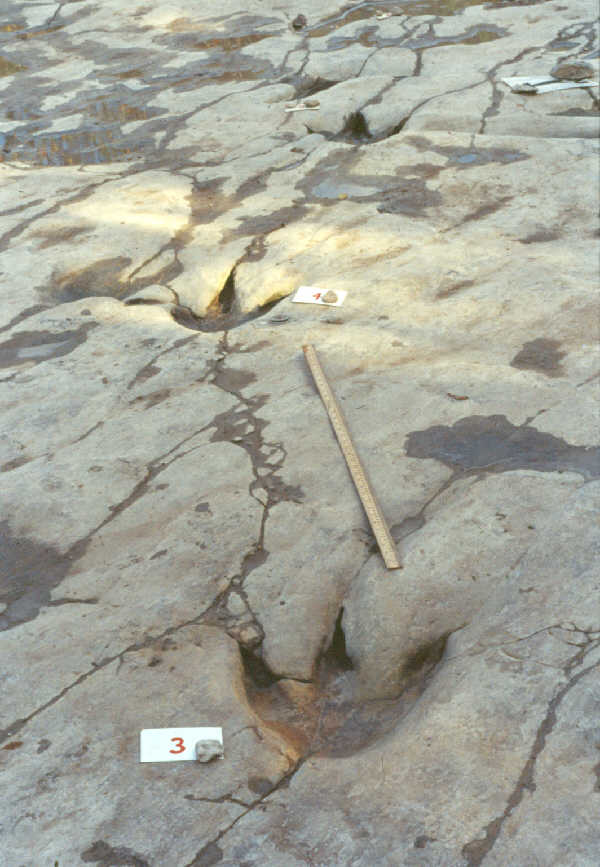

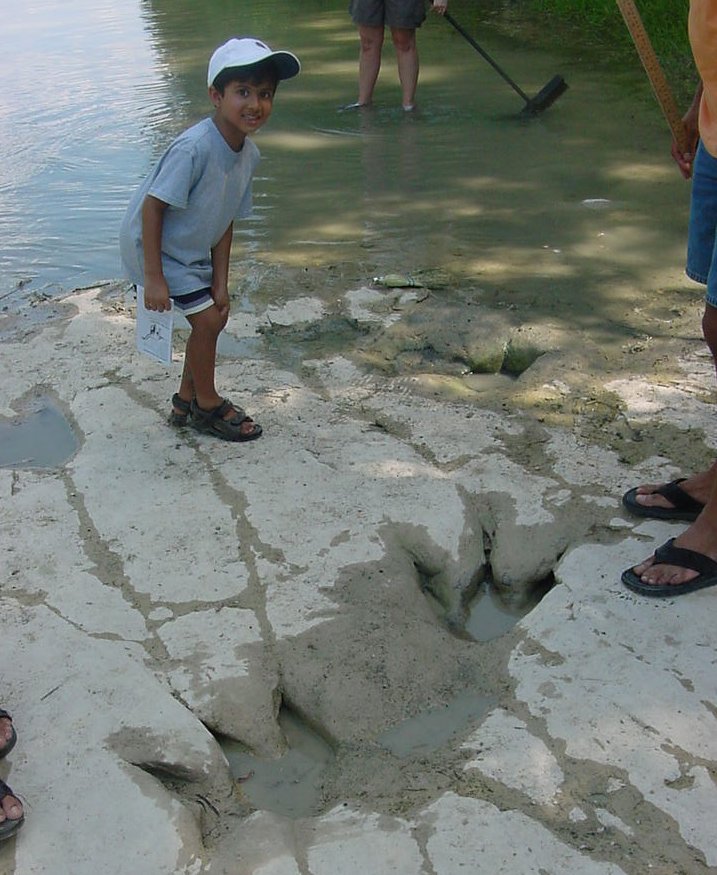

Updated Oct. 2017

|

|

|

|
Designated Site #3 in recent park literature, the Denio Site is located on the east side of the park, below and just to the south of the camping area. It is one of the most diverse and interesting track areas in the park, if not all of Texas, containing featuring many unusual tracks and track features. There is no sign or obvious access point, or parking area above the site; however, one can hike scale down a fairly steep dirt path just south of the camping area, or down the steps further south, and walk upriver. The site is currently marked along the river by a small brown plastic post. Except for the higher north end of the track shelf, most of the site is often under mud and water, except in late summer, but when dry, many are easy to find and recognize. Unforutantely many great tracks have been lost from the site as parts of the track bed broken up and been carried downstream during spring floods, uncluding the beautiful trail at the upper left above. However, many good ones are still left, and a number of tracks that met this site were recorded with rubber molds, photos, and scientific mapping. Also, a number of new tracks were newly exposed in 2017 along the west bank just north of the main part of the site, as shown in the last three photos below. These include several clear theropod tracks, one of which has distinct claw scratches next to it.

|
1. Several trails of distinct theropod tracks, including some that intersect (one of the best of these trails has broken away in recent years).
2. A long-striding theropod trail with erratic paces and track angles.
3. Several trails of mud-collapsed metatarsal tracks, possibly
responsible for some early claims of "moccasin" prints.
4. A sauropod trail, evidently heading north (opposite most in the park).
5. A long foot slide and possible tail swish associated with it (photo at upper right).
6. Some possible tail marks.
7. Several isolated double and tripple toe mark.
8. Several large double claw gouges, including a huge one in the lower south end of the site (usually under water and mud, so seldom visible). These may indicate another trackmaker dinosaur, possibly a therizinosaur.
9. A large and long trough with holes at each end, of unknown origin.
10. A trail of tiny, long-striding tracks probably made by a juvenile Acrocanthosaurus.
11. Two long trails of strange "squiggle marks" that extend across the entire site, which were probably made by some unknown unvertebrate.
12. Numerous faint and partial tracks.
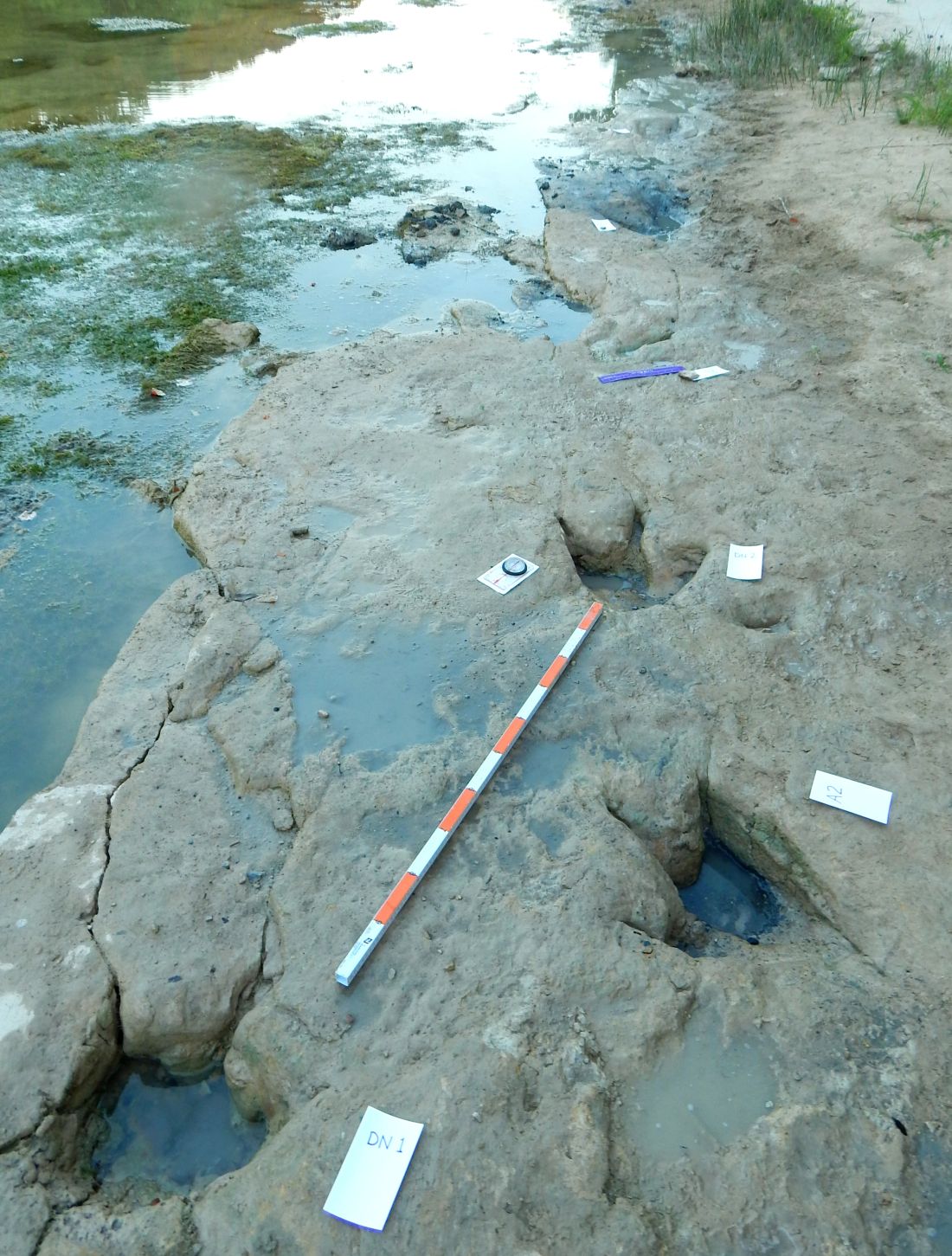
|
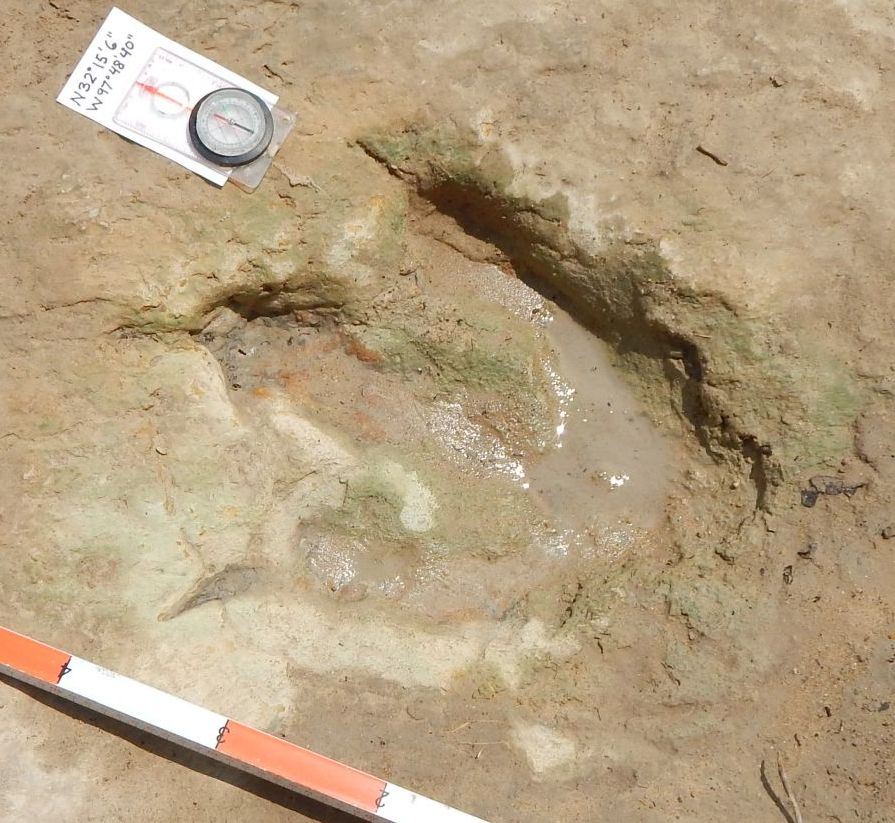
|
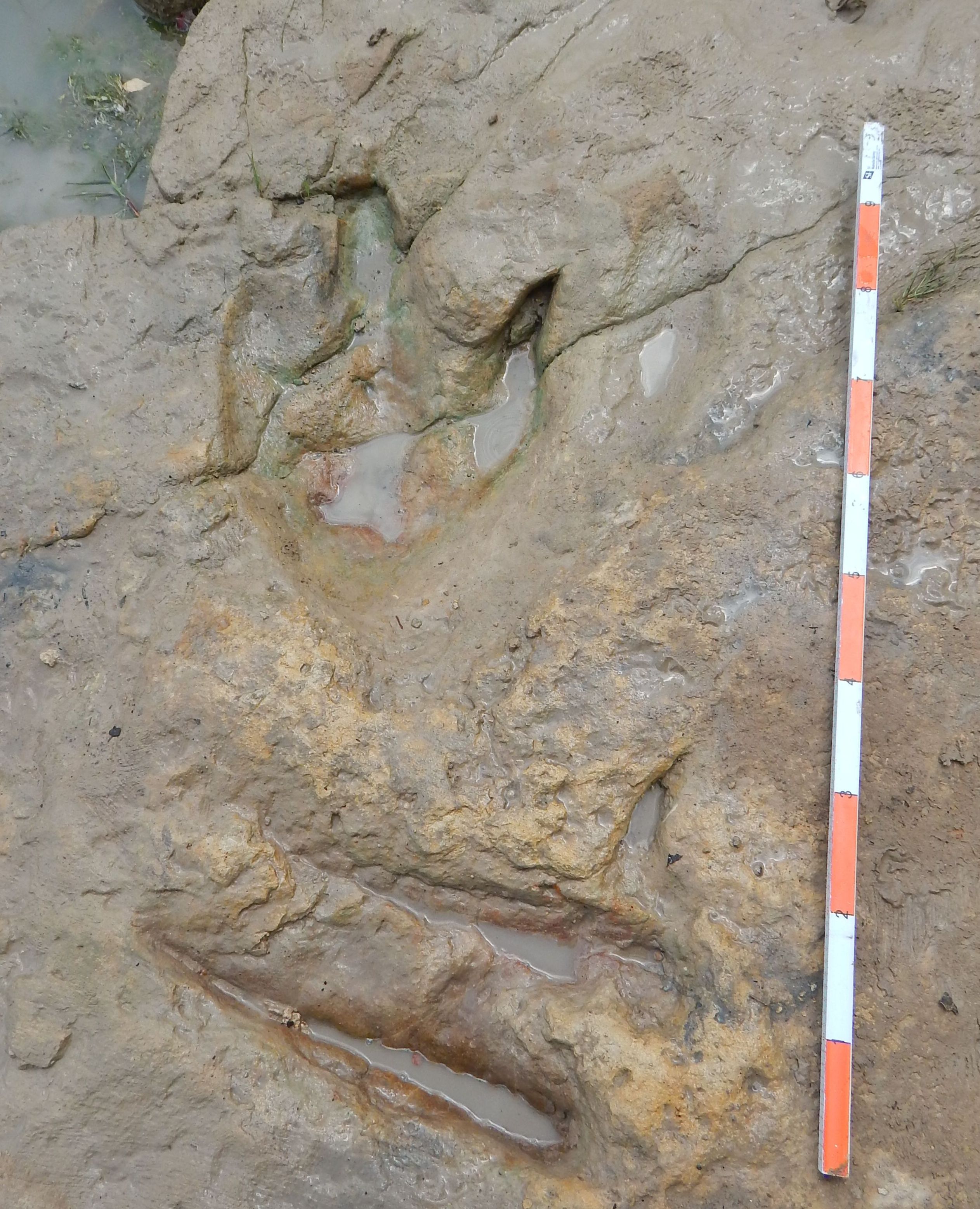
|